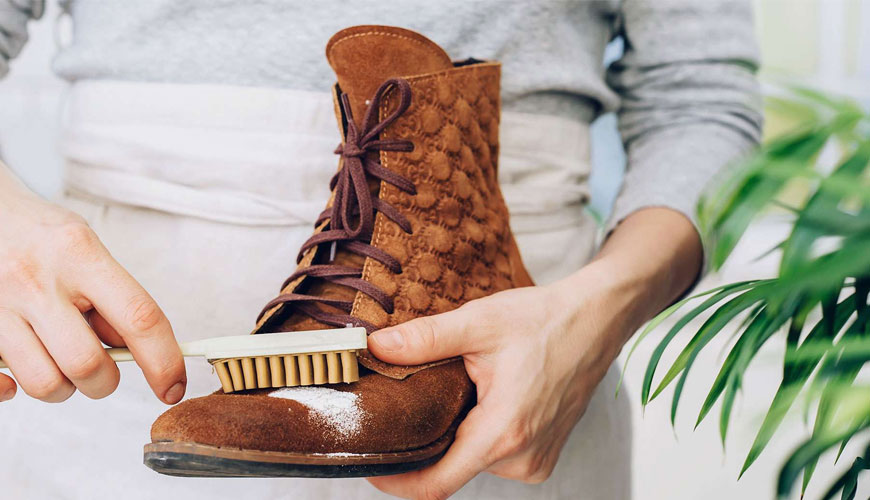

EUROLAB laboratory provides testing and compliance services within the scope of ISO 17700 standard. Developed by the International Standards Organization (ISO), the ISO 17700 standard specifies three test methods for assessing the degree of transfer of a material's surface color during dry or wet rubbing.

The methods can be applied to all shoe uppers, linings and socks, regardless of material. Method D can also be applied to sewing threads and shoelaces. The methods are:
Method A
Rectangular test specimens of sufficient size are required to clamp tightly to the test platform. Test specimens can be cut from the material in any direction. Typically, test specimens will have a minimum dimensions of 100 mm × 25 mm. In the case of tensile materials, the test specimen should be cut from the less elastic direction. Test machines with 25 mm wide test platforms require separate test specimens for each friction number or test condition to be used.
For test machines that have wider test platforms and can position the test finger (4.1.1.5) at different positions across the width of the platform, wider test specimens can be used so that the separate friction paths can be used side by side.
Method B
The test specimens shall be of sufficient size to allow them to be firmly fixed to the test platform. Typically, test specimens will be either 60mm x 60mm squares or 60mm diameter circles. Alternatively, a 60 mm wide strip can be used for several tests.
For materials, cut test samples from various positions along the full usable width and length of the sheet material. For materials with a woven structure, this should avoid any two samples containing the same warp or weft threads.
Method C
Two representative test specimens are required, each not less than 140 mm × 50 mm. One for dry scrubbing and the other for wet scrubbing. In the case of tension materials, the test specimen should be cut from the less elastic direction.
Method D
Test specimens may be taken from materials likely to be used for uppers, linings and inner socks, or from ready-made uppers, linings and socks, or finished products.
For each method of the test to be performed, a rectangular test specimen is cut with dimensions of 110 mm ± 10 mm × 55 mm ± 5 mm. If insufficient material is available, several small test specimens can be cut that can be matched to obtain a rectangle of this size.
For surface coated samples with low melting points or softening temperatures, the machine should be stopped at regular intervals to avoid thermal damage. The polished aluminum disc is rubbing the sample with the pad resting on it for 30 seconds to help remove heat from the pad and test sample.
should be placed in the field.
A number of commercially available rub fastness testers have the ability to automatically rub the sample for four cycles and then lift the rotary pad for four cycles, helping to keep the sample cool. A stream of cooling air is also directed at the test specimen as the pad is lifted to assist with cooling. In such cases it is important to ensure that the air supply is free of condensate or oil droplets.
Among the services provided by our organization within the framework of material testing services, there are also ISO 17700 standard tests. Do not hesitate to contact our laboratory EUROLAB for your testing and certification requests.
To get an appointment, to get more detailed information or to request an evaluation, you can ask us to fill in our form and reach you.